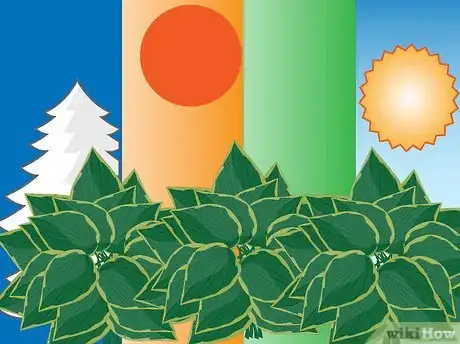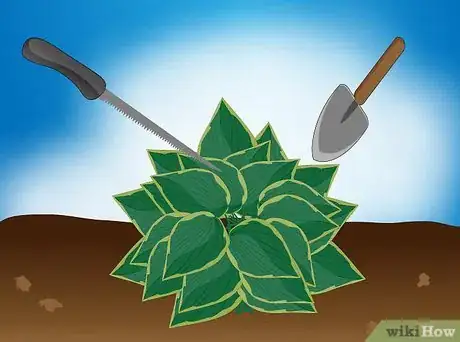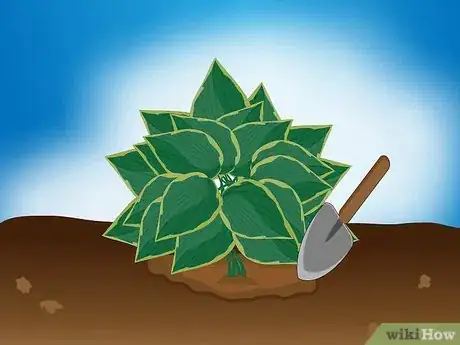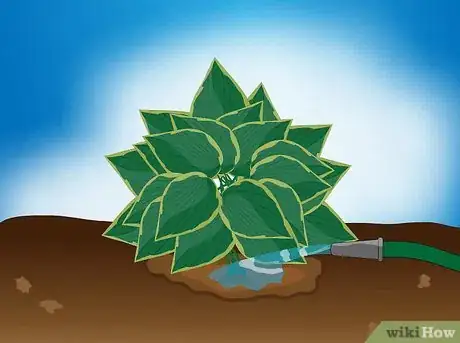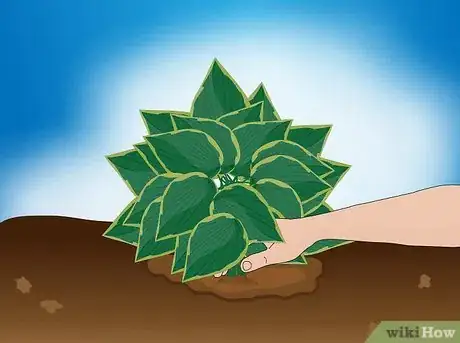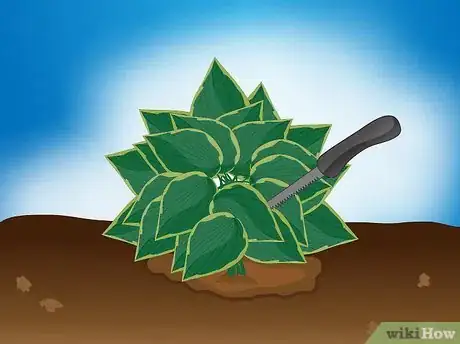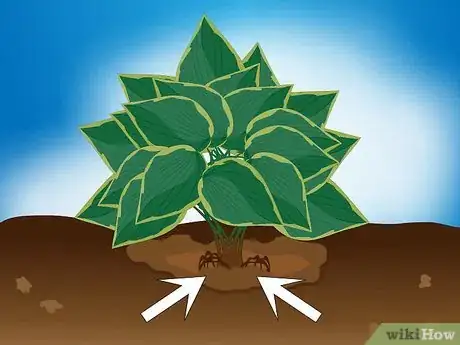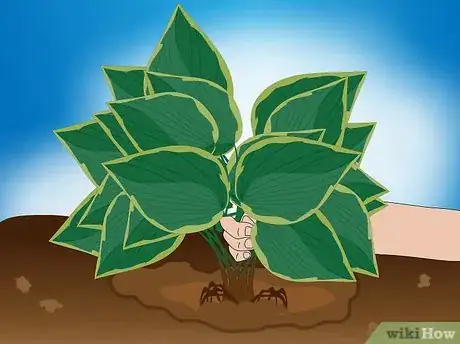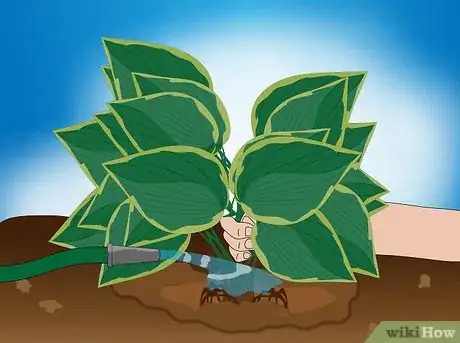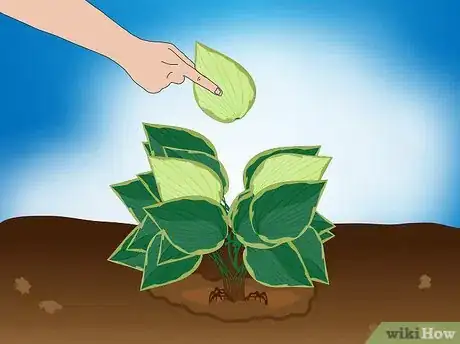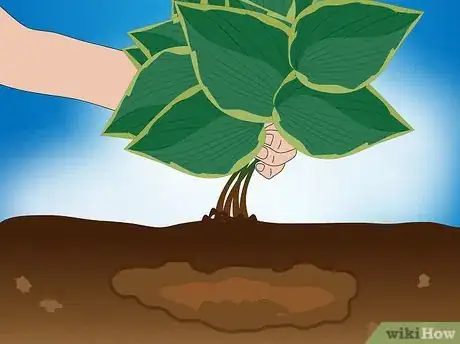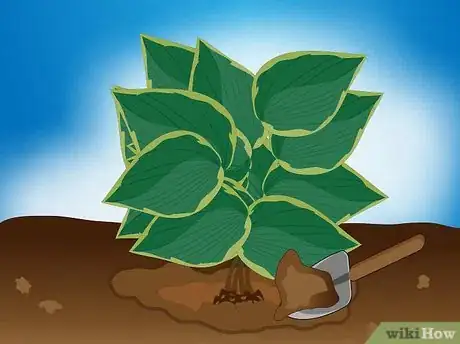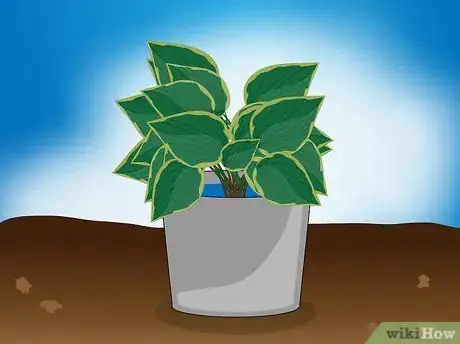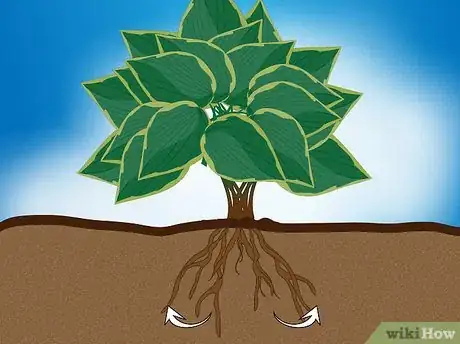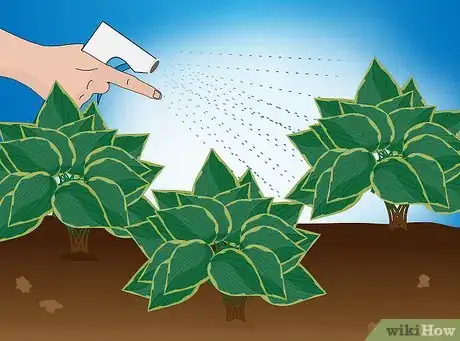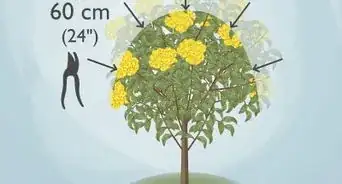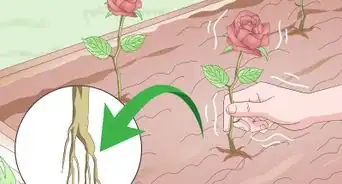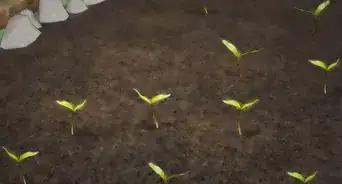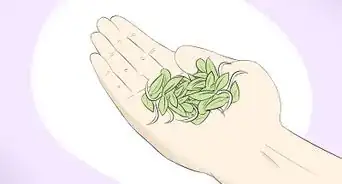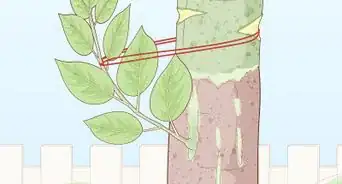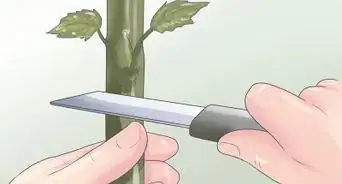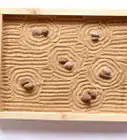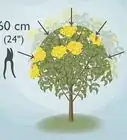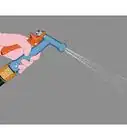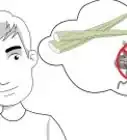wikiHow is a “wiki,” similar to Wikipedia, which means that many of our articles are co-written by multiple authors. To create this article, 16 people, some anonymous, worked to edit and improve it over time.
wikiHow marks an article as reader-approved once it receives enough positive feedback. This article received 18 testimonials and 98% of readers who voted found it helpful, earning it our reader-approved status.
This article has been viewed 503,085 times.
Learn more...
Growing hostas can be very fulfilling to a gardener, as they are hardy, thrive in the shade, and need little fuss. When these perennials get quite large, they can over-fill their garden space. Fortunately, hostas are also very easy to divide, perfect to share with friends, family, or even sell in plant sales!
Steps
-
1Choose the right time of year. While many gardeners choose spring for time to move and divide plants, it can have a negative effect on the plants, especially in hotter climates. It's preferable to divide hostas in the late summer and early fall, roughly 4 weeks before first frost.[1] Hostas are fairly tough plants, though, and can be divided at any time during the growing season if you carefully replant, water, and mulch the divided clumps. Tamping down the soil around the root ball so that the plant can't be easily dislodged will insure greater success.
-
2Get the right tools for your soil. Often, if the clumps are large (say about 25cm/10 inches across at the base), you will find it easiest to use a fork with flat blades and a spade or shovel. If the soil is very light and humus-y, and the plants are smaller, a long-bladed knife, preferably with a serrated blade, will work well. A hacksaw is very helpful if the clump is very large. Some folks like to have a garden hose handy, or a large bucket of clean water.Advertisement
-
3Cut or dig around the hosta plant, starting 10cm/4 inches from the base of a small plant, to 35cm/18 inches for a very large clump. Once you have cut a circle around the clump, slide the spade underneath the clump and lift it out of the ground, or pry the clump from the ground with the fork.
-
4If you are new at dividing hostas or other perennials, washing the dirt off the clump can be very helpful to see the individual plants and their rhizomes (from where the roots grow).[2] Also wash the plant if you are unsure of how the individual plants are growing and you don't want to slice one in half (particularly if the hosta is a slow-growing expensive one). Do not worry about damaging the roots with the water, because hostas' roots are tough.
-
5If possible, particularly if the hosta is not a large clump, separate the individual plants by hand,[3] by gently forcing your thumbs between plant's stems, and easing the stems apart. To remove a stem from the crown, use a back and forth pulling motion and not a side-wise motion (hold the core plant in one hand, and grab the stem in the other, rotate the stem-holding back and forth), work the stem back and forth until the rhizome comes loose or breaks from the crown. The rhizome will break at the appropriate point. Even if you lose some of the plant stems, you'll still have enough of the rhizomes to produce a healthy new clump.
-
6If the clump is very large, it may just be easier to use a serrated kitchen knife, to cut through the clump.[4] You can cut the clump in various sizes, such as simply in half, into thirds, or quarters.
-
7Start by spreading the roots so that you determine where you want to cut. Try to keep as many roots and leaves as possible, by making cuts through the crown but not into the roots. Start by cutting the crown in half, if you are really careful you can navigate around the stems; if the clump is really large, sometimes it is just easier to cut in half without much concern that you cut a few stems in half, because the clump is such a monster anyway.
-
8If possible, make the cut about halfway through the crown and then see if you can pull it apart by hand; use the same back and forth pulling motion. In this case, hold each half in one hand, and gently rotate the halves in opposite directions, then rotate back and forth each time applying a bit more pressure and simultaneously exerting pressure to move the halves away from each other. If you can't pull it apart then make the cut deeper.
-
9Washing between cuts to remove sand and small rocks can also improve your insight into how the plant's stems are growing, and to see where to cut or pull apart.
-
10You can also use the hacksaw to cut through the clump, by turning the clump on its side, but be careful that the saw doesn't get stuck, so prevent that by forcing the plant apart, either with your other hand or perhaps the handle of another garden tool, if the clump is huge and the saw is pretty deep into the clump.
-
11Remove some older, larger leaves or cutting the foliage back at the time of dividing will reduce water loss and help to minimize shock.
-
12Plant the divided plants.[5] Do not think that a small piece might not grow. It's amazing how resilient these plants are and you might as well plant the little pieces alongside a larger plant.
-
13Do not let the roots dry out too much. If you can not plant them right away, place some moist dirt or peat moss on the roots and put them away from direct sunlight, deep shade is good in hotter climes.
-
14If the plants' roots dry some before you get a chance to replant, soak the plant in a bucket of water for two to twelve hours. Do not leave the plants in water for more than a day, the roots will begin to rot.
-
15For stem divisions resulting from pulling plants apart and which have a nice balanced root distribution, plant these divisions at their original level, so that the white basal portions of the stems are just under the ground and you cannot see them. If you have washed the roots or the roots are not holding much soil, make a good size hole and spread the roots out in a fan. Replace the soil, pressing firmly with the heel of your hand around the plant, and water the plants well so no large air pockets in the soil exist.
-
16If you had to use the knife or hacksaw to cut the clump, plant these smaller now-divided clumps at the same height as they were growing, or just slightly deeper (1/3cm/1 to 1-1/2 in. deeper) and water in well.
-
17Keep newly divided hostas wet; keep plants from drying out for the first two weeks.
Community Q&A
-
QuestionIt appears there are seeds in the flower part of the hosta. If I plant them, will the seeds grow into a new plant?
 Community AnswerYes, you can plant them and you should get baby hostas. However, they won't look like their father or their mother, they may be a different color!
Community AnswerYes, you can plant them and you should get baby hostas. However, they won't look like their father or their mother, they may be a different color! -
QuestionCan I cut the flowering stems from hostas?
 Community AnswerYou can -- doing so won't hurt the plants.
Community AnswerYou can -- doing so won't hurt the plants. -
QuestionIs February too early to divide hostas?
 Community AnswerIf the weather is mild, it is fine to divide and replant as long as there is no threat of a frost.
Community AnswerIf the weather is mild, it is fine to divide and replant as long as there is no threat of a frost.
Warnings
- Slower growing plants or old mature clumps that are eight or more years old, produce the most dense clumps and are the hardest to divide. These large clumps require a spade and consequently more destruction of crowns and roots of individual plants as well as a longer period to recover from transplant shock.⧼thumbs_response⧽
